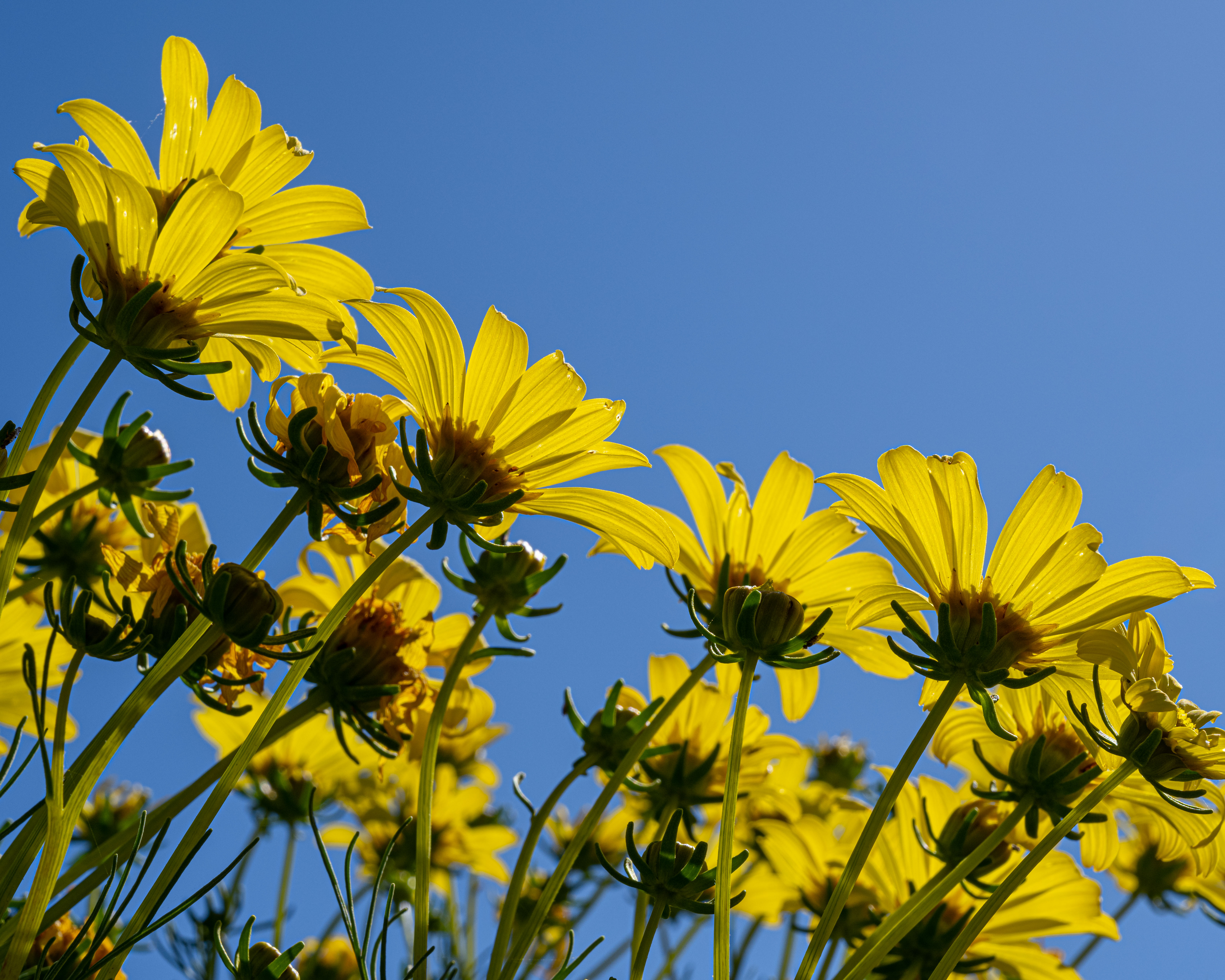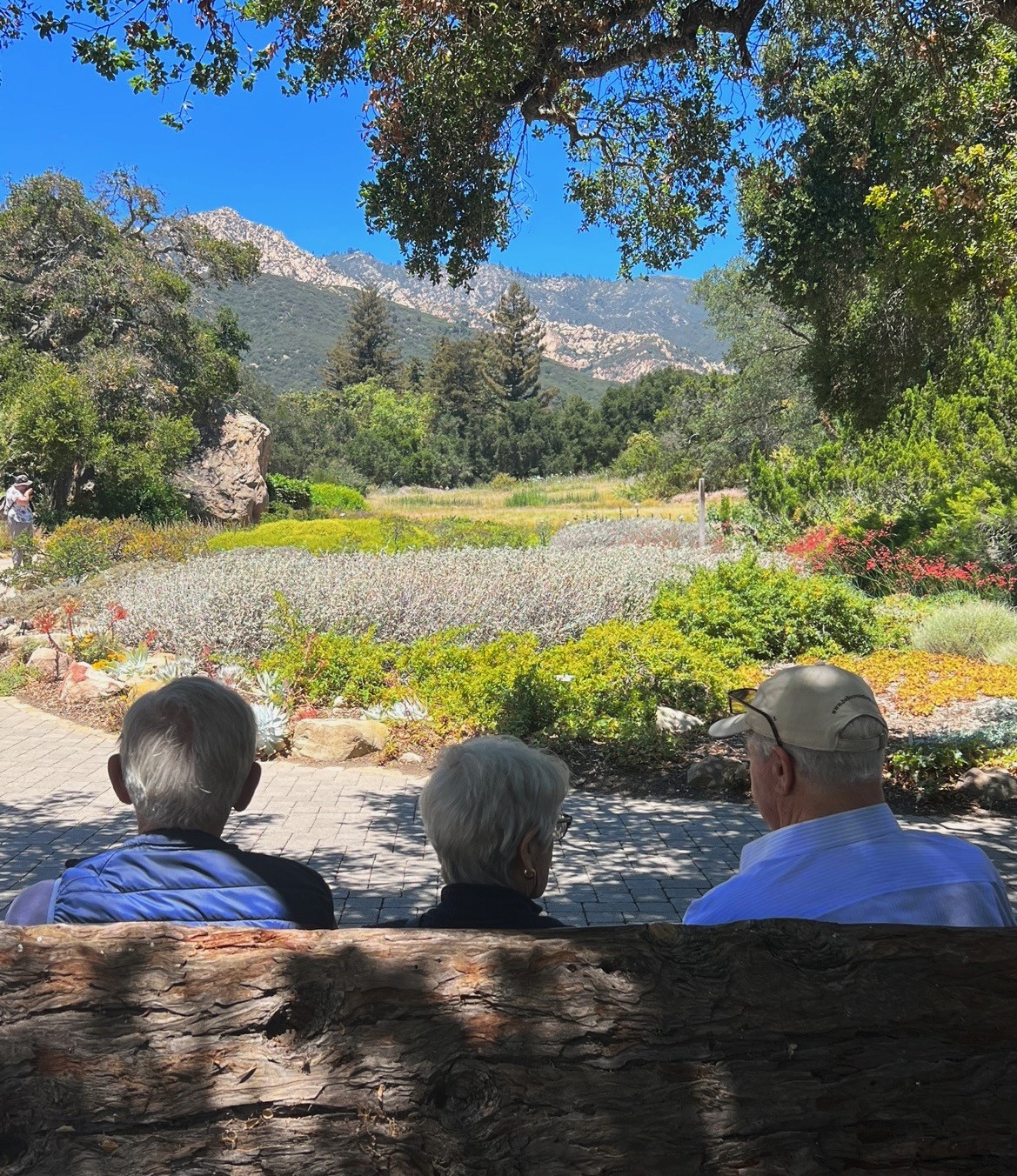
7 minute read
Seed for Yourself
By Holly Huff, Gardener
Growing plants from seed can be a rewarding and magical experience. From a young age, I helped my mom collect seed from plants around the yard. We would save them in brown paper bags and sprinkle them in the garden the following spring or give them away to friends and family. It was thrilling to watch the new sprouts emerge as the ground warmed up in the summer months. As a child, I didn’t understand the science behind how plants grew, so it always felt like a small miracle. Even with the horticultural education I have now and years of experience growing and tending to plants, that feeling remains. Even more exciting is having the opportunity to propagate seed for our Living Collection of California’s native plants at Santa Barbara Botanic Garden.
Our Living Plant Records
I currently work as the gardener for the Island View Section of the Garden, which displays plants from California’s Channel Islands and eight of the islands off the coast of Baja California, Mexico. This section of the Garden showcases individual island habitats grouped in beautiful biogeographic displays. More importantly, the accessioned plants within the Garden are associated with valuable data, all captured in the Garden’s plant records database. The database holds provenance data associated with each accession and tells us where they were collected, with information ranging from descriptions of the surrounding plants and habitat down to specific GPS coordinates. Steve Junak, former curator of the Clifton Smith Herbarium and a longtime island botanist, compared this database to keeping genealogical records or a family tree, where we store the history and can trace the characteristics of these plants. This corresponding data increases the value of the collections for research, conservation, and even restoration of many of these rare species.
How does this relate to the daily operations in the Garden? Our Living Collection is, and always will be, in a constant cycle of growth, decline, renovation, or change. Plants may simply be short-lived, or they may die due to herbivory or harsher weather conditions than they experience on the islands. To keep the Garden’s beds filled with these important accessioned materials, we need to cultivate these plants constantly. We have several dedicated staff groups who work to propagate and collect seed from important accessions to safeguard their genetic resources and provide new material for planting in the Garden.

A Walk Through the Channel Islands
Over the past year, I have been working with our Living Collection Nursery and other horticulture staff to identify opportunities for new introductions in the Island View Section, mainly using our Living Collection Seed Bank as source material. This section of the Garden can be tricky to plant, since we must use material that comes from the Channel Islands to maintain the integrity of this collection. You may not realize it when you walk the trails, but each plant grown there is a direct link to the Channel Islands. To that end, we exclusively use seed and cuttings from collections made on the islands or seed and cuttings from the plants that already exist in the Garden.
Collecting Seed for Science
If you have walked through the Garden recently and noticed mesh bags covering the flowers of certain plants, you’ve seen seed collection in action. These bags are used to control pollination of a plant, to prevent unwanted hybridization, and also to collect the seed. We have been using these bags on several of our island species that are at risk of cross-pollination with nearby cultivars or even closely related species. For example, one of our objectives is to propagate the rare San Nicolas Island buckwheat (Eriogonum grande var. timorum) for the Garden’s Living Collection, but it is surrounded by other important buckwheat taxa (or plant species) that could share pollen and potentially produce hybrids. To combat this, we bagged and hand-pollinated some of its flowers in hopes of generating pure seed for future propagation.

Many of the island taxa have not been in cultivation for long, or at all. When we have seed collected and ready to grow, we have to consider the differences between the island and mainland ecosystems to influence our propagation protocols. In collaboration with our Living Collection Nursery staff, I have been working on a “dual germination” experiment using wild-collected seed from Santa Cruz Island. I am growing island paintbrush (Castilleja hololeuca), native to the northern Channel Islands (San Miguel, Santa Rosa, Santa Cruz, and Anacapa Islands). It is a hemiparasitic plant, meaning it still can make its own food through photosynthesis but also is a facultative parasite of a host plant. Seed for its typical host plant, California sagebrush (Artemisia californica), were unavailable at the time, so I chose seed of giant coreopsis (Leptosyne gigantea), a relative in the sunflower family (Asteraceae). Both the island paintbrush and giant coreopsis seed were collected from Santa Cruz Island. We sowed them in a flat together and saw excellent germination of both species. Groupings of the two were moved into their own pots and several were planted in the Santa Cruz Island section in the winter of 2023. I continue to monitor these experiments in the Garden and Living Collection Nursery and look forward to trialing other hemiparasitic plant relationships in the future.

Guided by Nearly a Century of Knowledge
When I sow seed, I am fortunate to have the collective resources of our own and other botanic gardens’ generations of horticulturists to pull from. We utilize seed treatments detailed in manuals and books for much of our native California flora, from liquid smoke to sandpaper. These treatments often mimic complex ecological processes and natural dormancies that these seed require for germination in the wild. Propagating plants for the Garden has grown my appreciation for our Living Collection and has been a great motivation to invest time into studying our flora in more depth. A few of my recommended resources are listed below:
“Seed Propagation of Native California Plants” (Dara E. Emery)
“California Native Plants for the Garden” (Carol Bornstein, David Fross, Bart O’Brien)
“Growing California Native Plants” (Marjorie G. Schmidt, Katherine L. Greenberg)
“Chumash Ethnobotany: Plant Knowledge Among the Chumash People of Southern California” (Jan Timbrook)
CalBG.org
TheodorePayne.org
Ready, Set, Grow Your Seed
I encourage anyone interested in growing plants from seed to give it a try. You can start by looking around the Garden or on your favorite hike for inspiration. Think about how you can introduce some of your favorite native plants into your gardens — from the smallest potted plant to a majestic oak tree (Quercus spp.). If you already have a native plant garden at home, start by harvesting some of the seed your plants are already producing. Crumble old flower heads containing seed directly back onto the soil and see if new plants emerge.
The Garden would love to help you start growing California’s native plants. Our retail Garden Nursery and Shop can help you find a seed mix for beautiful spring flowers, books about California native plant gardening, and basic tools. For more hands-on instruction, keep an eye out for our horticulture classes, including seasonal seed propagation!
Bringing native plants back into our developed areas improves the habitat value for so many of our local fauna and helps to strengthen the bond between humans and the land that we inhabit. Happy seeding, everyone!











